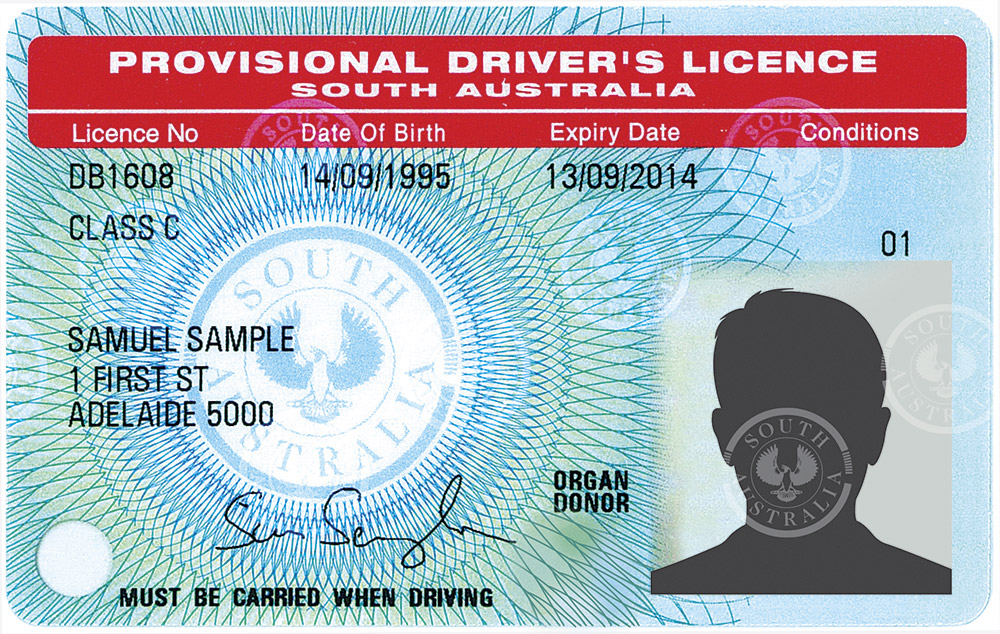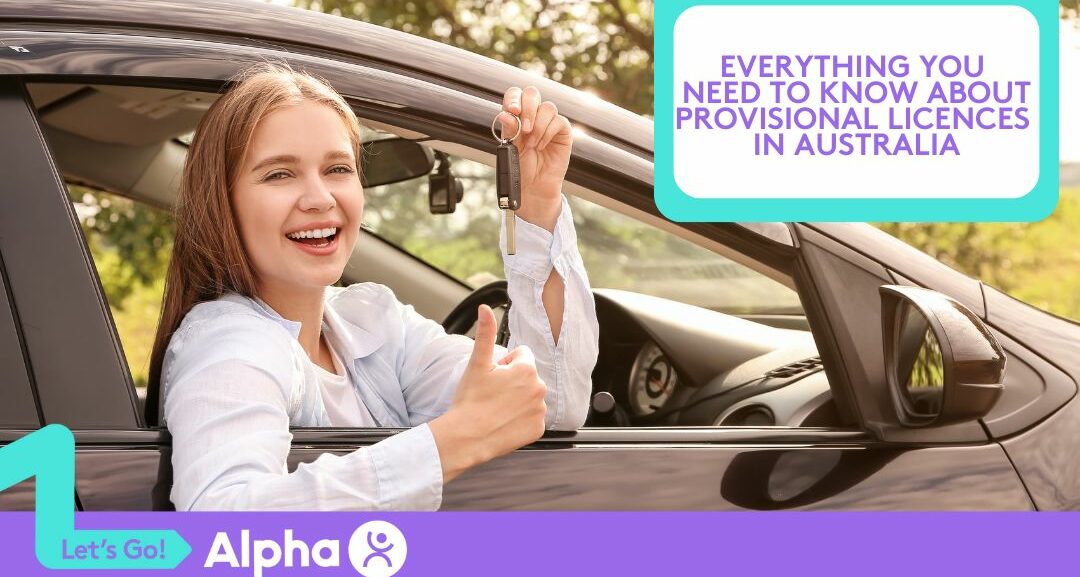A provisional licence, or P plate licence, is a mandatory step for new drivers in Australia. It bridges the gap between learner and full licence stages, allowing you to practice driving solo under supervision while developing essential skills and experience. This comprehensive guide dives deep into the requirements, restrictions, and benefits of provisional licences in Australia, equipping you with a smooth transition to independent driving.
What is a Provisional Licence?
A provisional licence is a probationary driving permit issued after completing the learner stage. It grants you the privilege to drive a car independently but comes with specific limitations compared to a full licence. Think of it as a supervised graduation program for drivers, allowing you to gain experience in a controlled environment before being unleashed on the roads with full autonomy.
How to Obtain a Provisional Licence:
Eligibility criteria:
- Age: The minimum age to apply for a provisional licence varies slightly across states. Typically, it ranges from 17 years old (in some states with specific conditions) to 18 years old.
- Learner permit: You must hold a learner’s permit for a designated period. This can be anywhere from 6 months to 1 year, depending on your age when you obtained the learner permit.
- Logbook requirements: Most states require you to complete a minimum number of supervised driving hours documented in a logbook. These hours ensure you gain exposure to various road conditions and driving scenarios under the guidance of a licenced driver.
- Tests and assessments: Passing a practical driving test and a hazard perception test are mandatory in most states. The practical driving test evaluates your ability to handle the vehicle safely and effectively in real-world situations. The hazard perception test assesses your awareness of potential dangers on the road, ensuring you can identify and react to hazards promptly.
Application process:
The application process for a provisional licence varies slightly between states. Contact your local licensing authority (e.g., Roads and Maritime Services [RMS] in New South Wales or VicRoads in Victoria) to get the most up-to-date information specific to your state.
Generally, you’ll need to submit completed application forms, proof of identity documents (like a passport or driver’s licence), your learner’s permit, and any required fees.
Many states offer online applications for added convenience, although in-person applications at a licencing office are usually an option as well.

Provisional Licence Restrictions:
Driving hours limitations:
Some states may impose restrictions on the number of driving hours you can accumulate, particularly during nighttime (usually between 11 pm and 5 am). This is to mitigate the increased risk associated with driving in low-light conditions.
Passenger restrictions:
You might be limited on the number of passengers you can carry, especially young or unlicenced passengers. This aims to minimize distractions and ensure you can focus on safe driving during this crucial learning period.
Other limitations:
Provisional licences often have lower demerit point thresholds before licence suspension. Demerit points are assigned for traffic violations, and exceeding the limit can lead to licence suspension or cancellation. This system encourages responsible driving habits from the outset.
Speed limits for provisional licence holders may also be lower than those for full licence holders. This helps ensure you develop safe driving habits and a sense of control before being allowed to travel at higher speeds.
Provisional Licence vs. Full Licence:
While a learner’s permit allows you to get behind the wheel with a supervisor, a provisional licence grants you a taste of independence. But there are key differences between these two stages that extend beyond just freedom and responsibility. Here’s a breakdown:
Driving Privileges:
- Learner’s Permit: Restricted to driving with a licenced supervisor present at all times. May have limitations on specific road types or times of day (e.g., not driving at night).
- Provisional Licence: Can drive solo but with limitations on passengers (especially young passengers), driving hours (often restricted nighttime driving), and speeds (lower speed limits compared to full licence holders).
- Full Licence: Unrestricted driving privileges – you can drive without supervision, carry any number of passengers (depending on vehicle capacity and state regulations), and enjoy unrestricted driving hours and speeds (within posted limits).
Vehicle Restrictions:
- Learner’s Permit: There may be limitations on the type of vehicle you can operate (e.g., not motorcycles or large trucks).
- Provisional Licence: Generally no restrictions on vehicle type, but some rental companies may have age limitations for specific vehicle classes.
- Full Licence: No restrictions on vehicle type.
Renewal Process:
- Learner’s Permit: Must be renewed after a specific period (usually a few years) if you haven’t obtained a provisional licence.
- Provisional Licence: Must be renewed periodically (usually every few years) to maintain driving privileges.
- Full Licence: Generally renewed every 10 years (may vary by state).
Testing Requirements:
- Learner’s Permit: A written knowledge test is required before obtaining a learner’s permit.
- Provisional Licence: A practical driving test and a hazard perception test are required to upgrade from a learner’s permit to a provisional licence.
- Full Licence: No additional testing is required after obtaining a provisional licence (unless a licence is suspended or cancelled).
Provisional Licence Age Requirements:
Minimum age for application:
As mentioned earlier, the minimum age to apply for a provisional licence varies slightly across Australian states. Here’s a breakdown:
- 17 years old: In some states, you may be eligible to apply at 17 with specific conditions, such as completing a longer learner permit period or participating in additional training programs.
- 18 years old: This is the most common minimum age requirement across most Australian states.
Age-related regulations:
There can be additional regulations tied to your age when it comes to provisional licences. Here are some examples:
- Logbook requirements: The number of required supervised driving hours documented in your logbook may differ depending on your age when you obtained your learner permit. Younger drivers might need to complete more supervised hours for additional practice.
- Demerit point thresholds: The number of demerit points allowed before licence suspension might be lower for provisional licence holders under a certain age (e.g., 21 years old). This reinforces the importance of responsible driving habits from the beginning.
Conclusion:
Securing a provisional licence is a significant step towards independent driving in Australia. This guide has equipped you with a comprehensive understanding of the requirements, restrictions, and benefits of provisional licences. Remember, understanding the specific regulations in your state and adhering to the provisional licence limitations are crucial for a smooth transition to becoming a safe and responsible driver on Australian roads.
Where to Get a Provisional Licence (By State):
- New South Wales: https://www.service.nsw.gov.au/services/provisional-driver-licences
- Victoria: https://www.vicroads.vic.gov.au/
- Queensland: https://www.qld.gov.au/transport/licensing/driver-licensing/applying/provisional/p1
- South Australia: https://www.sa.gov.au/topics/about-sa/directories/customer-service-centres
- Western Australia: https://www.transport.wa.gov.au/licensing/driving-on-your-p-plates.asp
- Tasmania: https://www.service.tas.gov.au/services/transport/driver-and-rider-licences/apply-for-a-provisional-driver-licence
- Northern Territory: https://nt.gov.au/driving/licence/getting-an-nt-licence/get-your-driver-licence
- Australian Capital Territory (ACT): https://www.accesscanberra.act.gov.au/driving-transport-and-parking/licences/get-your-provisional-driver-licence
Remember: These are just resources to get you started. It’s important to check with your state’s specific licensing authority for the most up-to-date information on requirements, fees, and the application process.
Rent a Car at Alpha Car Hire
Obtaining your learner’s permit is a big step, but hitting the road solo requires a full licence. We offer a variety of vehicles to suit your needs, all at competitive rates:
- Compact cars: Ideal for city driving and fuel-efficient.
- SUVs: Perfect for weekend getaways or if you need more cargo space.
- Vans: Great for larger groups or transporting a lot of gear.
- Utes: Ideal for work or outdoor activities.
- Moving trucks: Perfect for your next move.
Driver Requirements:
- You must hold a full and valid driver’s licence to rent a vehicle (learner’s permits not accepted).
- Drivers aged 21-24 will need to pay an age surcharge and are limited to compact and mid-size hatchbacks and sedans (subject to availability).
- There is no upper age limit for renting vehicles as long as your licence is valid.
- We do not rent to drivers under 21.
Book your car rental with Alpha Car Hire today and experience the freedom of the open road! Visit our website https://alphacarhire.com.au/ to browse our selection of vehicles and secure your rental – we guarantee a smooth and hassle-free experience to kickstart your driving adventures!
[/vc_column_text][/vc_column][/vc_row]


